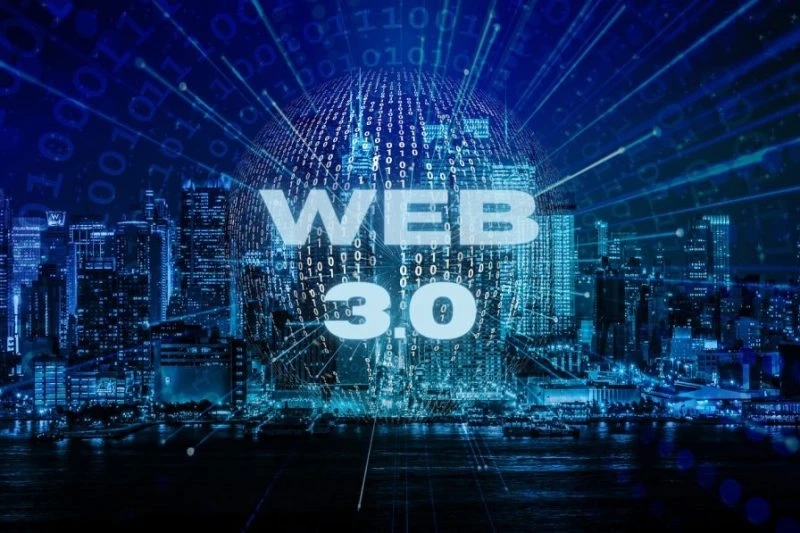Very intriguing Web 3.0 apps are already driving the next digital era and building a world that is already a reality. A technological scenario that establishes its bases in the development of the Blockchain Development Company and the automatic learning of Artificial Intelligence.
The technological world is extraordinarily dynamic, and there are many researchers who already affirm the arrival of a new digital age: Web 3.0. This concept has been formed from a set of ideas about how the web of the future should be; however, it does not have an exact definition. The five ideal web 3.0 apps and examples may be used to demonstrate this new digital ecosystem.
What is web 3.0?
The major goal of Web 3.0, which is connected to the semantic web, is to democratize the online world. To do this, it executes an automatic filtering of the data, in this way; the machines effectively understand the natural meaning of the information. Thanks to this interpretation made by the software, users and technological equipment can communicate quickly, accurately and efficiently.
Given that web 3.0 is associated with artificial intelligence, most websites created with this technology have the potential to interact with one another while taking the user's interests and goals into consideration. In addition, experts aspire to create a personalized space for each user. The internet will thereafter be full with interesting browsing opportunities.
Outstanding features of web 3.0
Although there is no specific definition, there are some very significant characteristics:
Intelligence:Web 3.0 aims to create a page classification model through a labelling system, in this way, search engines will be able to find and understand the information. With this objective, the user would access the website in their own language without the need to enter passwords. Ease:Users who visit a website usually spend some time adjusting to it. Now it seeks to standardize the pages, in order to homogenize the functions and facilitate navigation. Three-dimensionality:this technology aims to incorporate three-dimensional spaces into the daily life of users. With it, new devices appear to move easily through the web, leaving behind the traditional keyboard and mouse. Open:free software, standards and Creative Commons licenses are common in the digital environment, to continue promoting the free distribution of information. Therefore, we work in favor of the democratic use of information.Main Web 3.0 applications
Although some of this technology is still in the works, it's crucial to understand that Web 3.0 apps are currently a reality.
Machine Learning
In recent years, Artificial Intelligence has gained great prominence. Both have something in common with Web 3.0, Siri being one noteworthy example. Thanks to automated natural language processing, the intelligent assistant can analyze, talk, and interact with users. To handle vast volumes of data, machine learning is also used in conjunction with other technical tools like the Internet of Things (IoT) and Big Data.
Blockchain
The Blockchain, the most secure mathematical framework for users, was made possible by Web 3.0. This technique was developed to store data in a way that makes data falsification very difficult. It is a public electronic ledger that can be shared freely among diverse users, and also creates an immutable record of your transactions. The Blockchain Development Company provides an ultra-secure network, since the data is transmitted in an encrypted manner. Blockchains promote the creation of smart contracts and are effective and quick.
Non-fungible tokens (NFTs)
Each NFT, a kind of encryption, is unique and non-transferable. In addition, they are linked to digital or physical assets, therefore, they have ownership and ownership. Its growth is being very important in areas such as art or fashion, however, today they are not regulated by any authority or legal institution.
Metaverse
As a preview of the Web 3.0 interface, the metaverse is another application that will communicate with this semantic web. To create an immersive experience that combines digital aspects with the real world, it will primarily rely on Virtual Reality (VR) and Augmented Reality (AR).
Cryptocurrencies
Cryptocurrency offering is another popular application and they are known as Web 3.0 tokens. Its main objective is to give the user greater control over their digital content with the help of a centralized infrastructure. Except in El Salvador, no government now has jurisdiction over digital currencies, nor do central banks or other financial institutions. Blockchain technology is used by cryptocurrencies to keep track of who holds how many coins and how many are in circulation.
Most relevant Web 3.0 examples
The following examples are the most pertinent ones given the applications:
Quintura: is a brand- new relational search engine. Through a cloud of collected tags and terms, it facilitates navigation to other concepts of interest. Gnoss:is a platform created in Spain in order to design a digital identity for each person that serves as identification in any environment. His main current incorporation has been in companies. Obsidian Secure Messenger:is an Android app that is a part of the blockchain-based Obsidian Platform. Its interface is similar to a chat, but users can also exchange tokens to be contacted.

